Related Research Articles

Wadhurst is a market town in East Sussex, England. It is the centre of the civil parish of Wadhurst, which also includes the hamlets of Cousley Wood and Tidebrook. Wadhurst is twinned with Aubers in France.
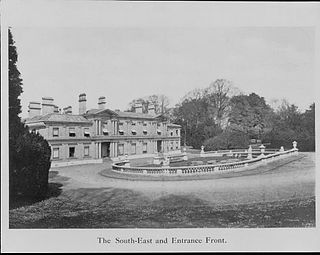
Aston Clinton House was a large mansion to the south-east of the village of Aston Clinton in Buckinghamshire, England.

Langley Hall is a red-brick building in the Palladian style, formerly a country house but now a private school, located near Loddon, Norfolk, England. It is a grade I listed building.

Lydiard Park is a 260-acre (110-hectare) country park at Lydiard Tregoze, which was its former name, about 3 miles (5 km) west of central Swindon, Wiltshire, England, near Junction 16 of the M4 motorway.

Gunnersbury Park is a park between Acton, Brentford, Chiswick and Ealing, West London, England. Purchased for the nation from the Rothschild family, it was opened to the public by Neville Chamberlain, then Minister of Health, on 21 May 1926. The park is currently jointly managed by Hounslow and Ealing borough councils. A major restoration project funded by the Heritage Lottery Fund was completed in 2018. The park and garden is Grade II listed.
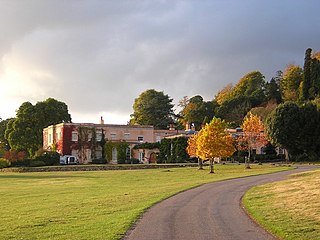
Killerton is an 18th-century house in Broadclyst, Exeter, Devon, England, which, with its hillside garden and estate, has been owned by the National Trust since 1944 and is open to the public. The National Trust displays the house as a comfortable home. On display in the house is a collection of 18th- to 20th-century costumes, originally known as the Paulise de Bush collection, shown in period rooms.
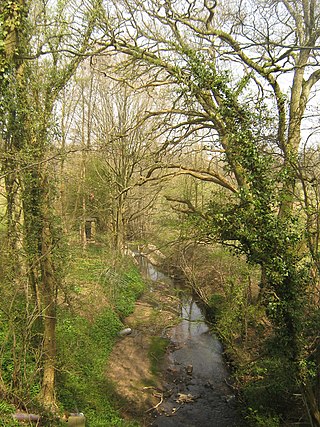
The River Bewl is a tributary of the River Teise in Kent, England. Its headwaters are in the High Weald, in Sussex between Lamberhurst, Wadhurst and Flimwell. The valley is deeply incised into Tunbridge Wells red sandstone, with a base of alluvium on Wadhurst clay.
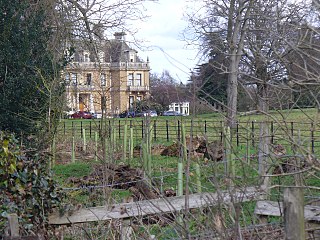
Cobham Park is a set of about 22 apartments in and around a converted country mansion and associated lawn, gardens, fields and woodlands in the mainly rural south of the parish of Cobham, Surrey in England. Its old extent takes in the majority of Downside, Surrey, centred on a row of staff cottages.
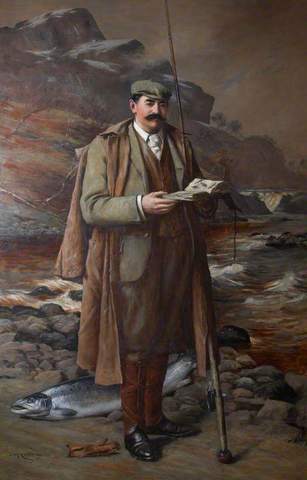
Julius Charles Drewe was an English businessman, retailer and entrepreneur who founded Home and Colonial Stores, and who ordered the building of Castle Drogo in Devon.

Foots Cray Place was one of the four country houses built in England in the 18th century to a design inspired by Palladio's Villa Capra near Vicenza. Built in 1754 near Sidcup, Kent, Foots Cray Place was demolished in 1950 after a fire in 1949. Of the three other houses in England, Nuthall Temple in Nottinghamshire was built 1757 and demolished in 1929; the other two survive: Mereworth Castle and Chiswick House, both now Grade I listed buildings. A modern fifth example, Henbury Hall, was built near Macclesfield in the 1980s. Another example of a similar structure in England is the Temple of the Four Winds at Castle Howard, which is a garden building not a house.

John Outram is a British architect. He established a practice in London in 1974 and produced a series of buildings in which polychromy and Classical allusions were well to the fore. Among his works are the temple-like Storm Water Pumping Station, Isle of Dogs, London (1985–8), the New House at Wadhurst Park, Sussex (1978–86), the Judge Institute of Management Studies in Cambridge (1995), and the Computational Engineering Building, Rice University, Houston, Texas (1997).
Tekels Park, Camberley, Surrey consists of about 20 hectares of land, grassland and houses.
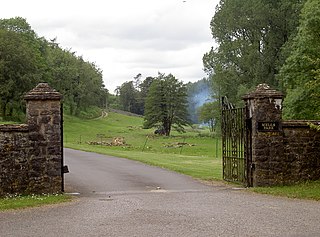
Mells Park is a country estate of 140 hectares near Mells, Somerset, England. It originated as a 17th-century deer park, probably created by the Horner family, who had been the owners of Mells Manor from 1543. The Horners expanded the park and planted extensive woodlands, resulting in a large collection of mature trees, especially 18th-century plantings of oak, lime and beech. The park is Grade II listed in the National Register of Historic Parks and Gardens. It contains Park House, also known as Mells Park House, a Grade II* listed building, built in 1925 in neoclassical style by the architect Edwin Lutyens, replacing an 18th-century house of the same name. It is c. 1 mile (1.6 km) west of Mells Manor House, which does not lie within the park.

Burton Park is a 19th-century country house in the civil parish of Duncton in West Sussex, and is situated 1/2 a mile to the east of the village of Duncton, within its own estate. It is a Grade I listed building, now converted into multiple occupation.
Northmoor is an historic estate in the parish of Dulverton in Somerset, England. The Victorian mansion house known as Northmoor House is set amongst steep wooded valleys on the southern edge of Exmoor.

Lamorbey Park is a 57-hectare (140-acre) park in Lamorbey, in the London Borough of Bexley, set around a Grade II listed mansion, Lamorbey House. The original 17th century estate consisted of 119 hectares, but over time sections of the estate have been separated for other uses, including two secondary schools, Rose Bruford College, and Sidcup Golf Club. The area of the park still in public ownership includes The Glade, a 7.4-hectare (18-acre) area of historic landscape laid in the 1920s with a large lake. The park was added to the Register of Historic Parks and Gardens of special historic interest in 1988.
Wilbury House or Wilbury Park is an 18th-century Neo-Palladian country house in the parish of Newton Tony, Wiltshire in South West England, about 8.7 miles (14 km) northeast of Salisbury. It is a Grade I listed building, and the surrounding park and garden are Grade II listed.

Langley Park is a historic house and estate in Buckinghamshire, England. The parkland is currently known as Langley Park Country Park, and is open to visitors. The house, designed and built by Stiff Leadbetter, is a Grade II* listed building, and the parkland, designed by landscape architect Lancelot 'Capability' Brown, and gardens are Grade II listed together. The house and grounds are owned by Buckinghamshire Council, and the house is leased as a privately run hotel.
Anthony du Gard Pasley was a garden designer and landscape architect, who created many private gardens in Britain, Switzerland, southern France and other parts of Europe. He was known for his control of space and his extensive plant knowledge.
The New House, Wadhurst Park, Wadhurst is a Postmodernist country house in East Sussex, England. It was commissioned by Hans Rausing and his wife, Märit, and designed by John Outram. Built between 1982 and 1986, the house was designated a Grade I listed building in 2020.
References
- ↑ "Environmental purpose".
- ↑ "Wadhurst History Society". www.wadhurst.info.
- ↑ Brown, Jane (1996). Lutyens and the Edwardians: An English Architect and His Clients. ISBN 9780670858712.
- ↑ Breese, Charlotte: "Hutch" (1999). Bloomsbury.
- ↑ "Wadhurst History Society". wadhurst.info.
- 1 2 Historic England. "The New House, including orangery, Millennium Pavilion, terraces and all hard landscaping by John Outram Associates, Wadhurst (1457638)". National Heritage List for England . Retrieved 19 November 2021.